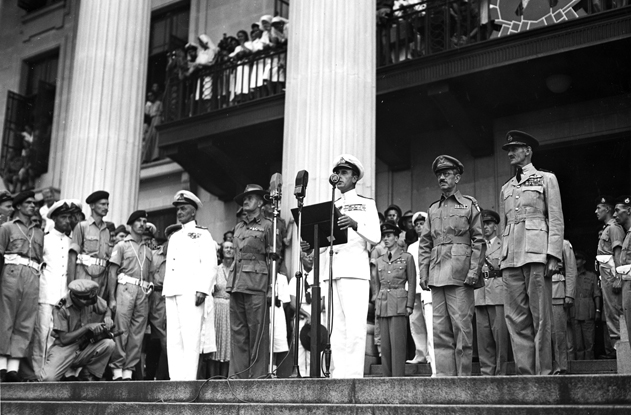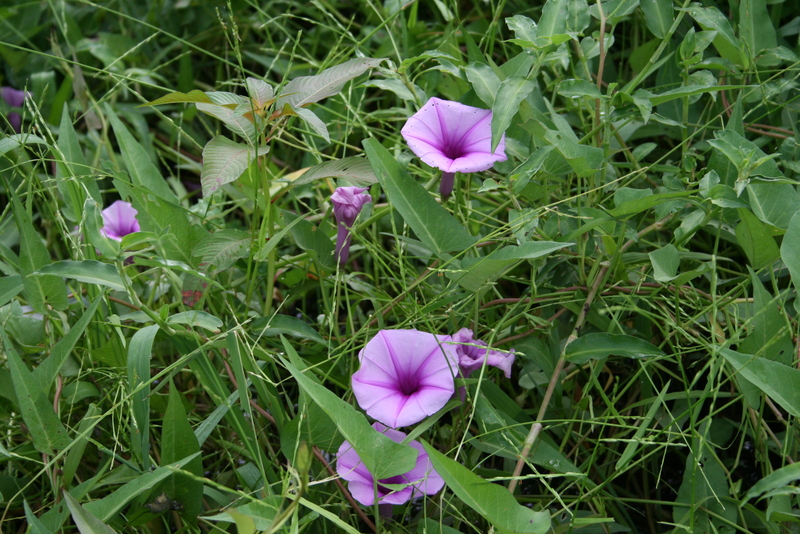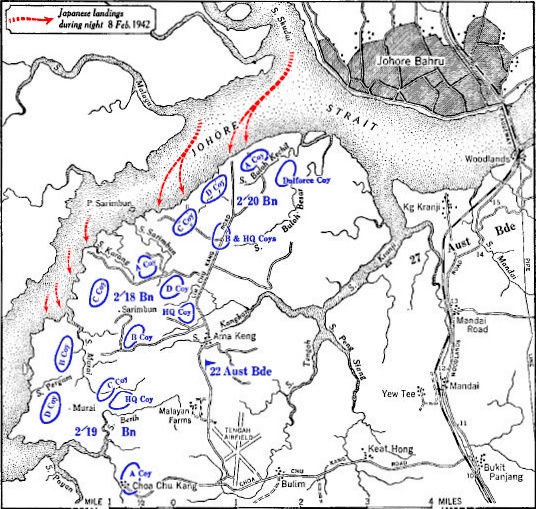The attack on Singapore was assigned to 34 bombers of Genzan Air Group (
Genzan Kaigun Kōkūtai) and 31 bombers of Mihoro Air Group.
Their targets were RAF Tengah, RAF Seletar, Sembawang Naval Base and Keppel Harbour.
Six squadrons from both air groups took off from southern Indochina
on the night of 7 December 1941. However, bad weather conditions were
encountered while over the South China Sea.
Thick clouds offered poor visibility for the pilots, while rough winds
caused most of the formations to become separated. After several
attempts to regroup failed, Lieutenant Commander Niichi Nakanishi, Wing Commander of Genzan Air Group, ordered them to abort mission and return to base,
thereby reducing the impact of a much heavier raid.
Only seventeen G3M bombers of Mihoro Air Group reached Singapore on schedule.

The Japanese formation was detected by a radar station in Mersing,
Malaya, almost an hour before they reached Singapore. Three Brewster
Buffalo fighters of No. 453 Squadron RAAF were on standby at RAF
Sembawang. However, Flight Lieutenant Tim Vigors' request to scramble
and intercept the Japanese bombers was denied. Air Chief Marshal Robert
Brooke-Popham feared that the anti-aircraft batteries would fire on the
friendly fighters, despite Vigors being an experienced night fighter in
the Battle of Britain. He was supplemented by the belief that the
Buffalo fighter was only suited for daylight fighting and could not be
used at night. Paradoxically, there were 12 Bristol Blenheim Mark IF
night fighters of No. 27 Squadron RAF stationed in Sungai Petani,
Malaya, but were being used as ground-attack aircraft.

The streets were still brightly lit despite air raid sirens going off at 0400, allowing pilot navigators to locate their targets without difficulty. ARP Headquarters was not even manned, and there was no blackout as police and power station
officials could not find the employee who had the key to the switch
(only two practice blackouts were conducted in September 1941 before the
raid).
When the bombers began their attack at 0430, Allied anti-aircraft guns immediately opened fire. The battleship
Prince of Wales and battlecruiser
Repulse
also responded, but no aircraft was shot down. A formation of nine
bombers flew over without releasing their bombs to draw the searchlights
and anti-aircraft guns away from the other group. They were flying at
12,000 feet, while the second formation was at 4,000 feet.
The 'Raiders Passed' signal was sent out at 0500.
The bombers succeeded in bombing the airfields at Seletar and Tengah, damaging three Bristol Blenheim bombers of No. 34 Squadron RAF.
A number of bombs also fell on Raffles Place. 61 people were killed and more than 700 were injured. Most of the casualties were troops of the 2/2nd Gurkha Rifles, 11th Indian Infantry Division. The Japanese bombers all returned safely to Thu Dau Mot.
Though the bombing caused only minor damage to the airfields, it stunned the British Far East Command. Despite intelligence reports of Japanese aircraft performance in the Second Sino-Japanese War,
the command did not believe Japan's air forces were capable of striking
Singapore from airfields more than 600 miles away in Indochina. The
raid came as a surprise to Lieutenant General Arthur Percival, who "hardly expected the Japanese to have any very long-range aircraft."

After Reading This, i think that Singaporeans should actually listen for the alarm and know the different alarm that sounds on Total Defense Day. i myself, always during Total Defense Day, i wouldnt even care about the sirens that will sound and i dont even know the diffrent sirens that represent what.so after reading this i think i should listen to the sirens and on the radio and find out what the sirens represent so if something actually happen i would know how to react.
Source:http://en.wikipedia.org/wiki/Bombing_of_Singapore_%281941%29(Date Accessed: 14 February 2013)




 (Japanese Rising Sun Flag)
(Japanese Rising Sun Flag) 




 Source:http://en.wikipedia.org/wiki/Operation_Tiderace(Date Accessed:13 Feb 2013)
Source:http://en.wikipedia.org/wiki/Operation_Tiderace(Date Accessed:13 Feb 2013)




